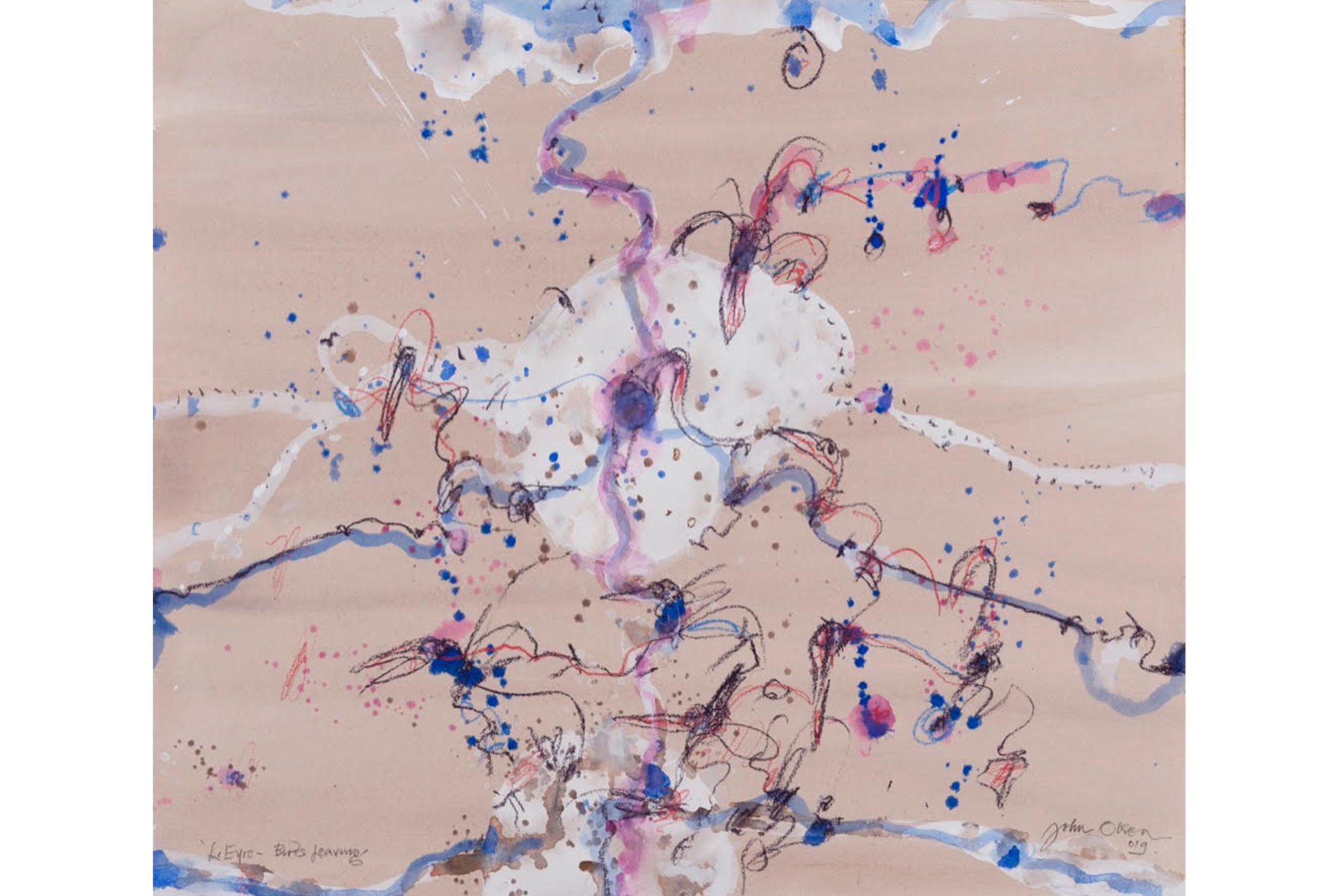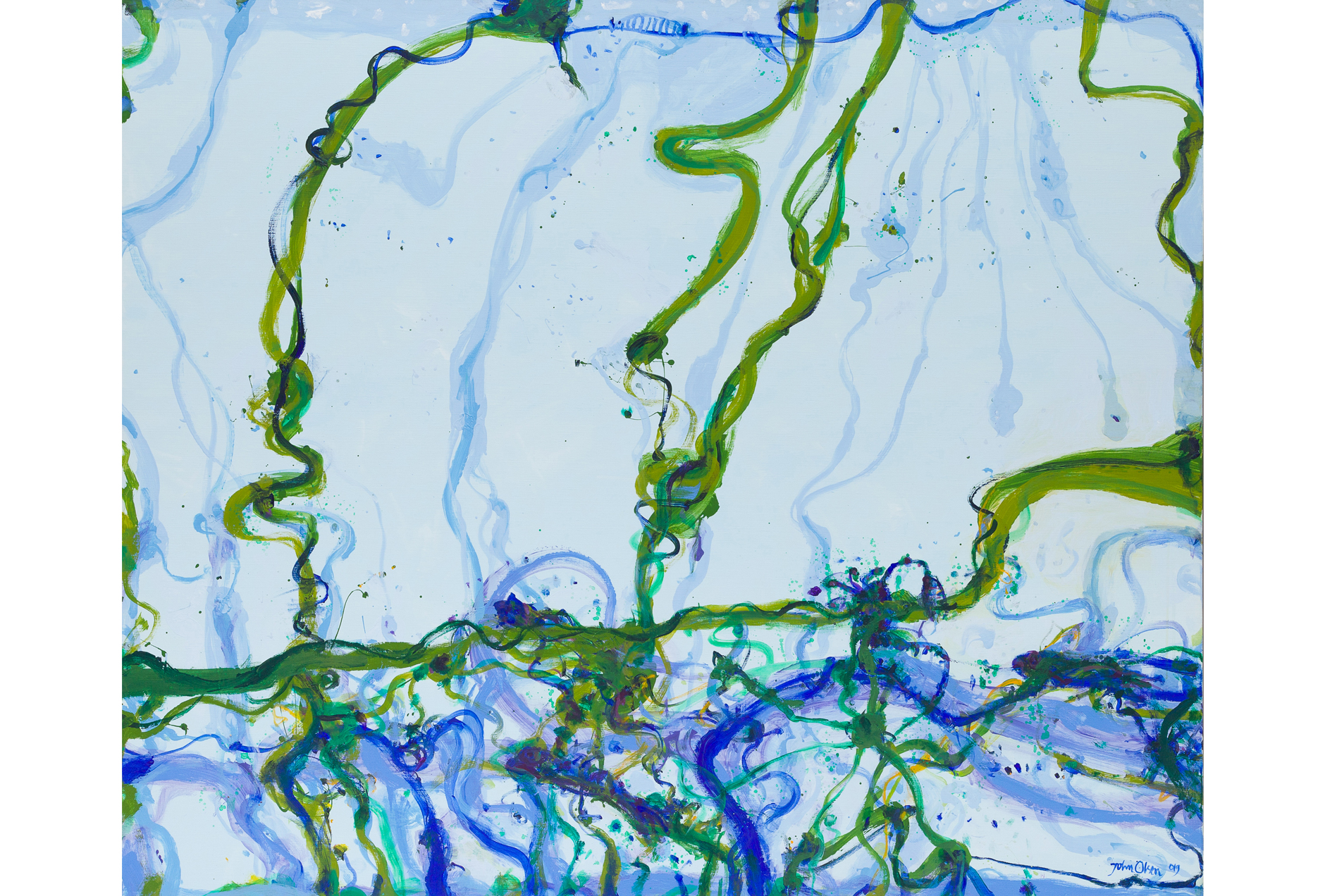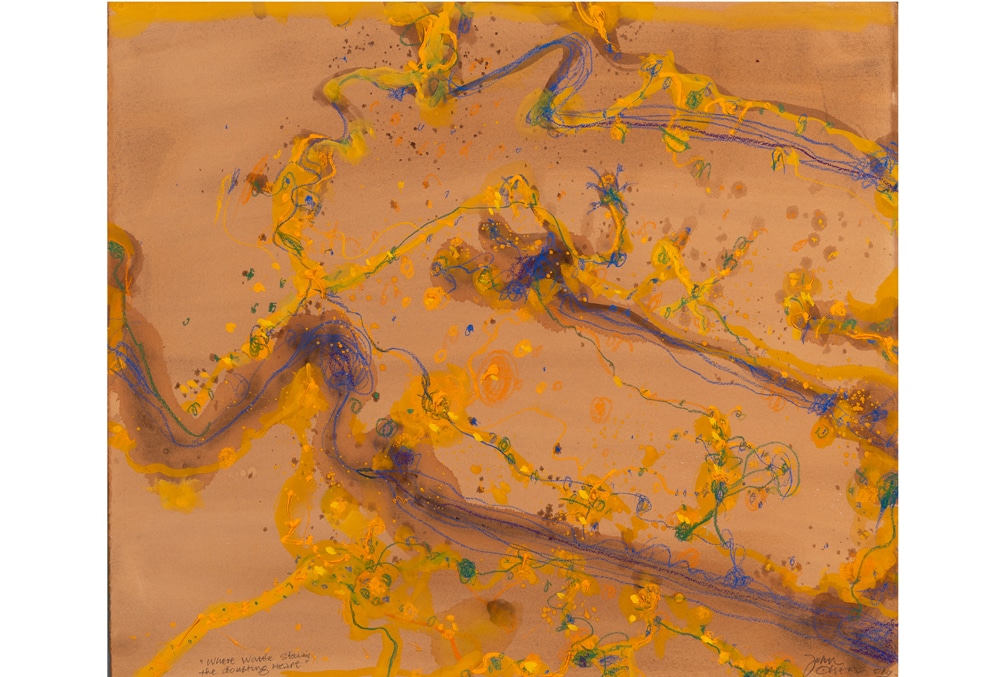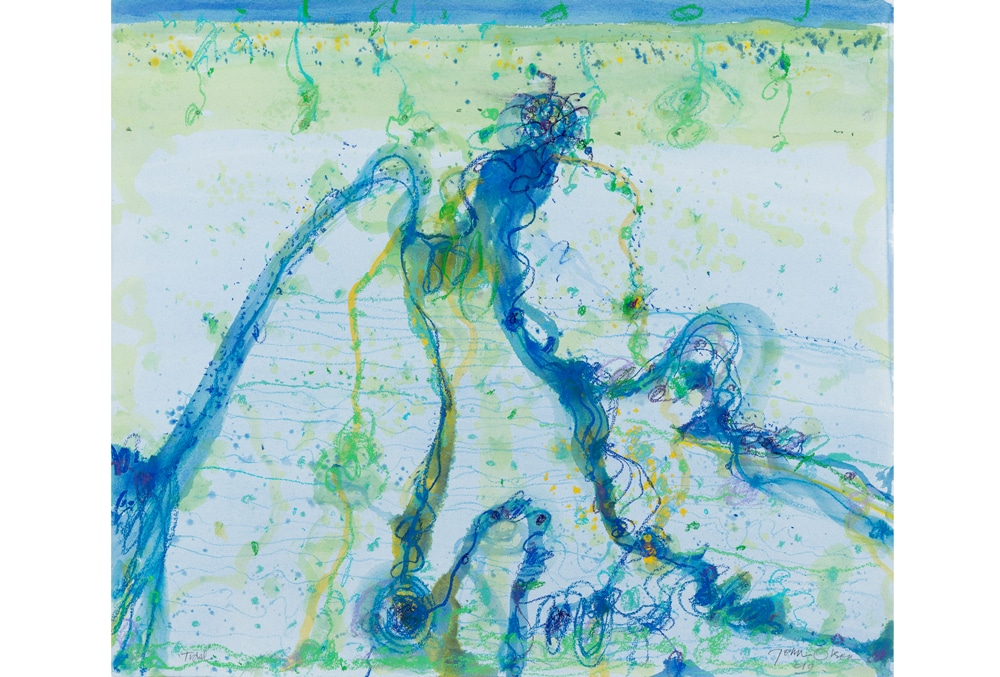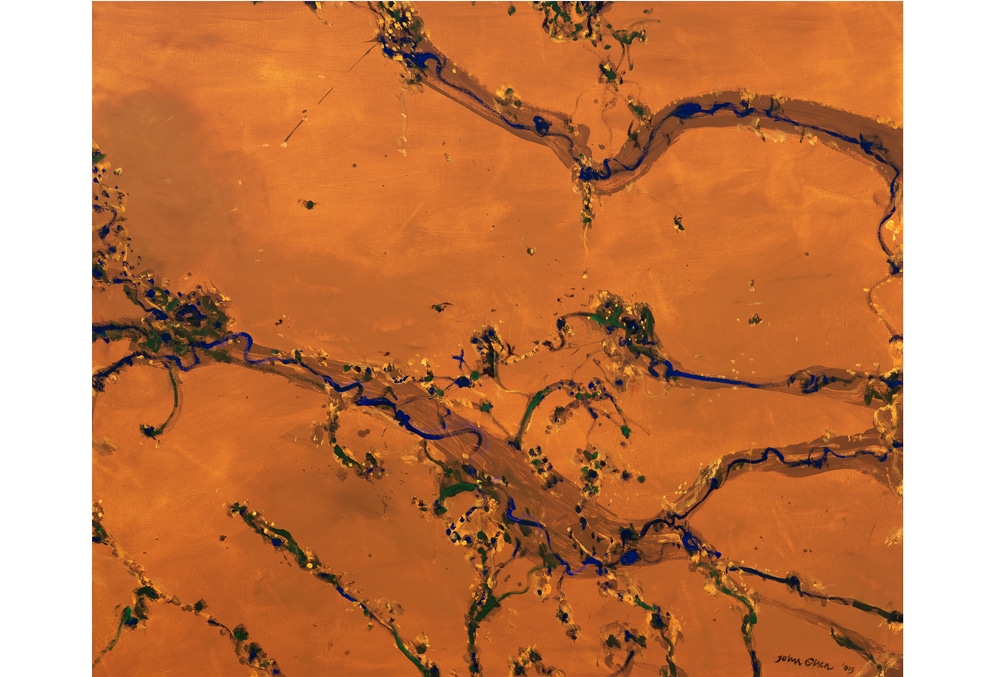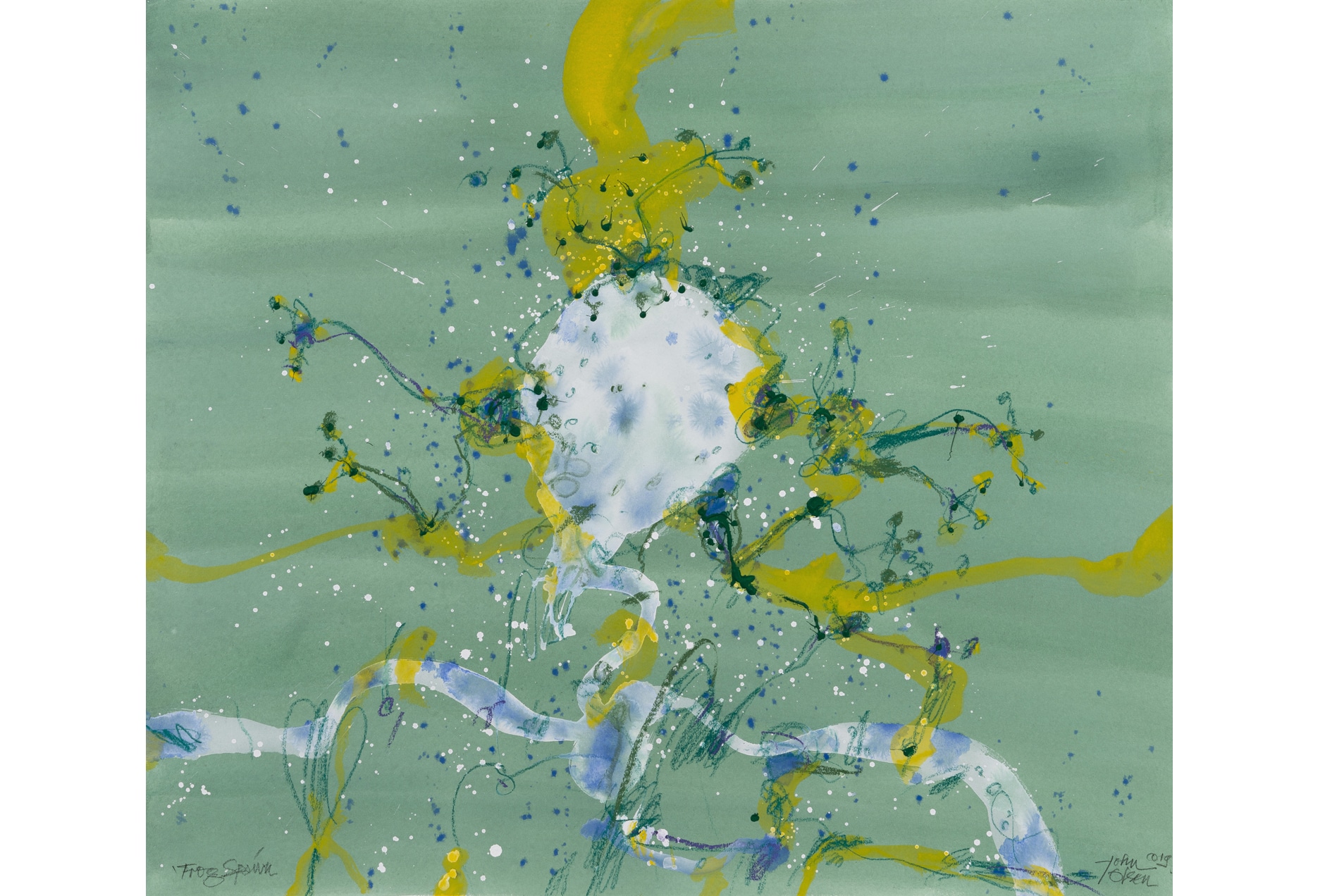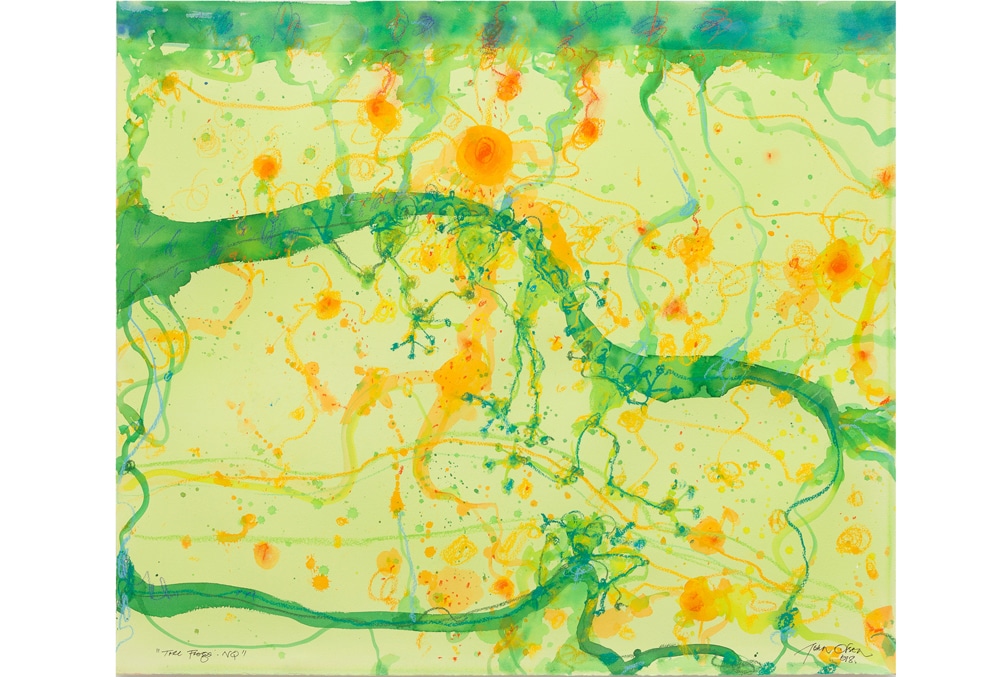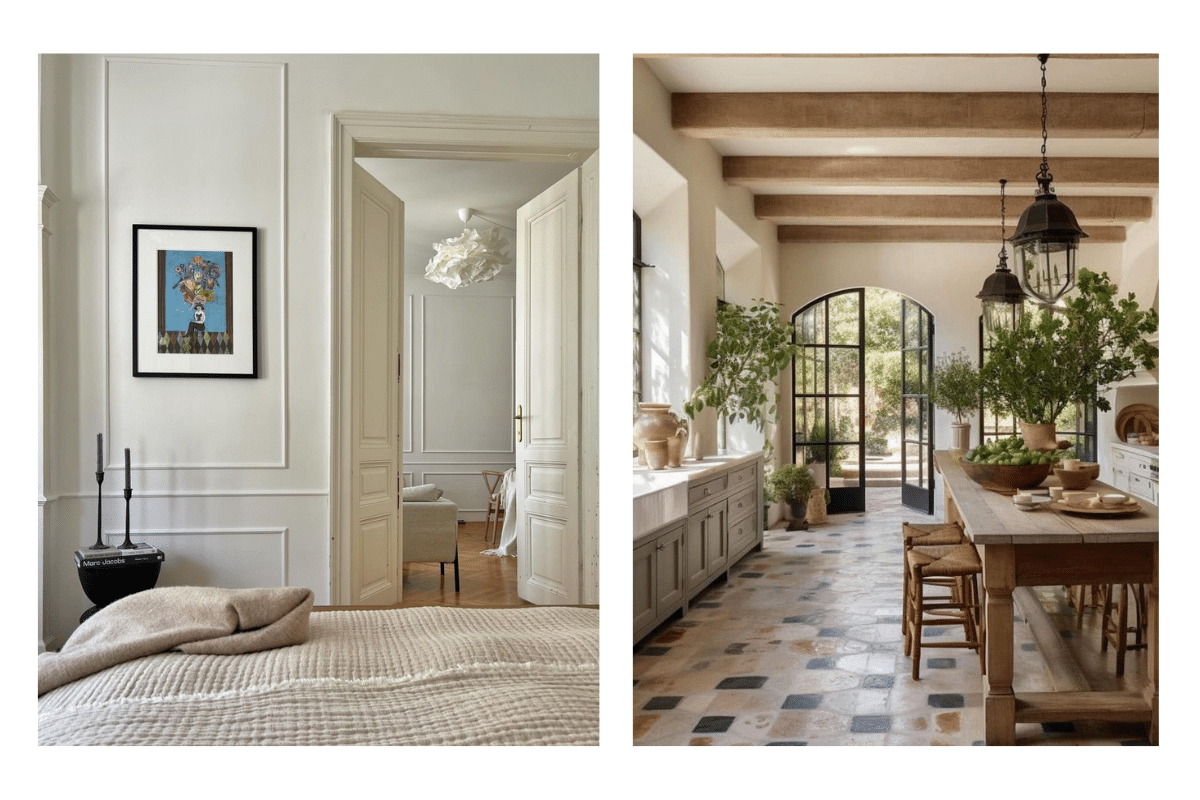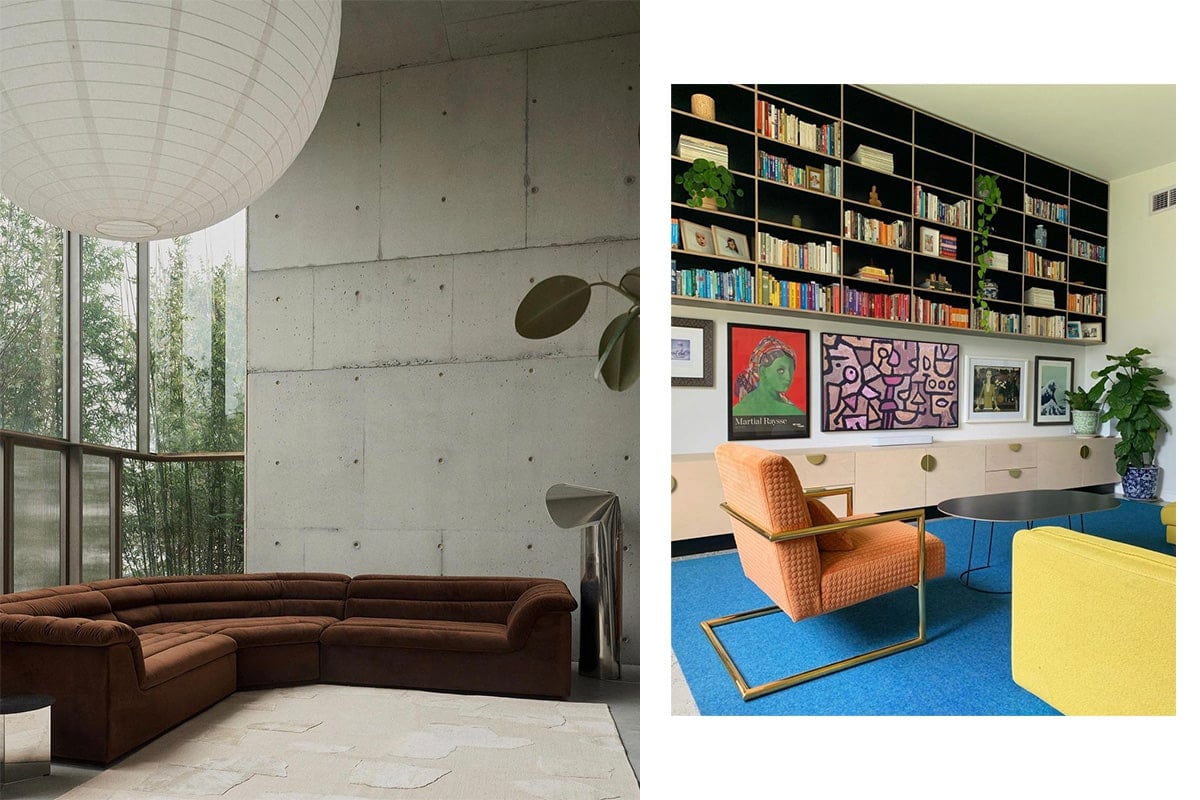John Olsen, Australia’s most revered living artist, unveiled a suite of new works this month at his son’s Olsen Gallery. A formidable presence in the art world for over six decades, Olsen shows little sign of slowing down. Simply titled Recent Works, his new exhibition includes sprawling landscapes, nuanced studies of animal life and intimate paintings based on the artist’s passion for food and cooking. Now 91, Olsen is a painter who has forever changed how Australians see their country and its landscapes. After immersing himself in the art scenes of Paris and Spain, Olsen returned to Australia in 1960 – creating the first of his hugely influential works, based on a unique vision of the outback and its endless flux.
Olsen’s newest paintings all feature his signature combination of colour, energetic painterly vigour and exuberant gesture. For the artist, “memory is a powerful thing” – with his latest series an exploration of enduring themes undertaken with a fresh view.
We sat down with John to talk about his life, his work and the things that inspire him.
Did you plan the show, or did it organically happen?
Well it came together over about five years but you see, for me, it is a day by day affair. Some people paint for months to gestate. I just work and that’s what happens. It varies. Sometimes it happens very quickly. A big picture I painted in the Art Gallery of New South Wales – in the old measurements, six foot by six – I painted overnight! I work according to how I’m breathing. It’s just part and parcel of life. It really began when I was five and you see, art is not a profession - it’s a disease. I suffered from galloping art in the tertiary stages and I haven’t found anyone who can operate.
A lot of people confuse your work with trying to directly describe what you are seeing. Primarily, are your works are a lot about feeling how the colours and the work feels?
It’s very intuitive and extremely personal, always. How the picture really begins is a kind of a conversation that you have with it. It says, “do this to me!” And I say, “do that… there, are you happy?” “No, not yet. No.”
So it just takes time. But it is there that the sensitivity takes place— of when to leave it and when to keep going.
"Part of the question is, how do I know when it’s finished? The answer is when it tells me."
You’re often described as an evocative landscape painter, but the other description that comes up is colour. How do you balance these elements in your work?
Some pictures, particularly if you’re painting the Australian landscape, are significantly tonal. If I was to do a picture on that - that’s colour! So, it’s largely dictated by the theme of the painting.
You’re known for your landscapes, but have also painted the urban environment, the human figure, animals and still lifes. There are many paintings you’ve completed previously and in this new series which refer to your love of cooking. Is it the process of painting food or cooking food that inspires you, or both?
It’s really both. Take for example, the Spanish Paella. It’s cooked in a round pan, which is known as a Paella pan. Basically, it was a peasant’s dish and was made from the sort of things that the fishermen had left over. It has saffron and red peppers and mussels and so on and when it comes together, it has an image of a sun. It’s like a galaxy — a world contained within a world.
Would you say colour and creating worlds within worlds is what unites all of your various subjects?
Oh yes, paella is much more than just a meal – it’s a kind of symbol. Like if I’m painting a fish, it becomes a symbol of Christian overtones and the sea. The same for squids and things of that kind. I have another theme of frogs and they are just a symbol of the mere exhilaration for life.
I’ve also noticed that you love poetry. Does poetry and metaphors play a strong role in your artistic work?
Oh, you’d be crazy if it wasn’t! Like Gerard Manley Hopkins says [in Pied Beauty]:
Glory be to God for dappled things –
For skies of couple-colour as a brinded cow;
For rose-moles all in stipple upon trout that swim;
Fresh-fire coal chestnut-falls, finches’ wings;…
Whatever is fickle, freckled (who knows how?)…
Praise him.
For me, poetry is the extended metaphor. In Hopkins work, there is a kind of universality, unlike Dylan Thomas, whose poems often speak of reason.
On that note, Dylan Thomas, in his work Poem in October, wrote of his 30th year in the Harbour, of a journey out of autumn and up a hill to reclaim childhood joy, the summer season and his spirituality. Your new body of work features a painting of the Sydney Harbour – it has been a long time since you have painted Sydney. What encouraged you to return to this subject, in your 91st year?
It has been a long time. The harbour is just magnificent — the blue goddess – and Sydney really is the Harbour City, the same as Barcelona is. Sydney became my Milk Wood [Dylan Thomas’s 1954 play, Under Milk Wood, about the dreams and innermost thoughts of a fictional community of villagers]. The interesting thing about Milk Wood, which I was influenced by, was that it was this Welsh village in the morning and it would slowly wake in the evening. It progresses. And I thought, here I am in Sydney Harbour, why not use that same kind of time factor?
How do your works allude to this sense of timelessness? Is the way you remember things important?
It corresponds to memory really. Even though I’m looking at something, it has to get to a collective meaning. Like something that’s got a soul about it. I’m always fascinated by the Greek philosopher Heraclitus, who said you can’t step into the same river twice.
Some of the new works hark back to past works, are they about sentiment?
The new work is really just about how I feel now. I'm following the poet William Butler Yeat's advice [from his poem ‘The Circus Animals’ Desertion’] and the theme of his circus animals – every now and then he will pull out a circus animal.
Do you think your work is getting better with time and age?
I’m still working, and this is recent work. I’m not trying to outdo the past or prove anything about the future. I’m just moved by now. It may be peculiar, but I’m an eternal optimist. I just think that you’ve got the seed, which you plant in the earth, and you’ve got the stem going up. Then you’ve got the lovely flower, which isn’t related to the seed or the stem – but it’s the optimism of the seed that makes the flower. Because nature is optimistic.
Recent Works will be exhibited at Olsen Gallery until February 1, 2020, with the gallery closed between December 22, 2019, and January 6, 2020.

